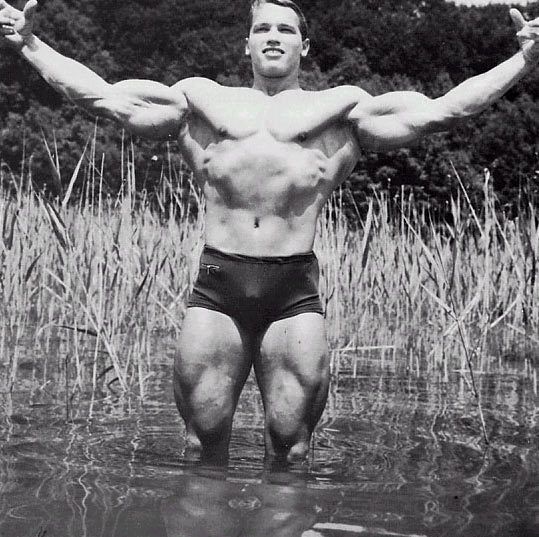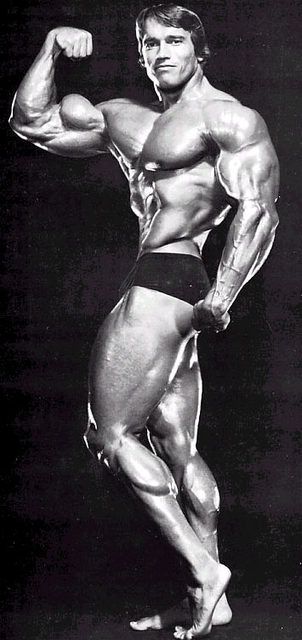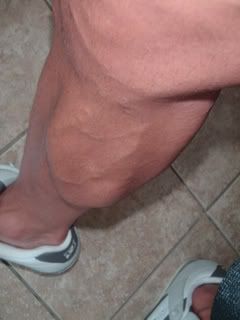Eight Secrets to Building Bigger Calves
Practical, effective ways to develop this stubborn muscle group
by Charles Poliquin
It's easy to become motivated to train the muscles in your chest, shoulders and arms. In just about everything you wear, and every time you look in the mirror, these muscles are prominently displayed. And if you've worked hard, your friends who haven't seen you for some time will ask, "Hey, have you been working out?" Encouraged by such constant reinforcement, you train these muscle groups even harder and get creative with supersets, giant sets, partials, isometrics - you name it and you'll probably try it to make these muscles grow. But the same attitude and training approach seldom apply to working the calves.
The calves can be easily hidden with pants; and if you've been training your legs hard, your friends will assume that your calves are equally developed. You may even actually start to believe it yourself. But when it's time to get serious and you decide it's time to bring your lower legs up to the proportions of the rest of your body, you become frustrated. Other than a few sets of standing calf raises, and perhaps a few seated ones, you just run into a brick wall in trying to figure out other things to make them grow.
I mention this scenario because I am constantly getting letters from people asking for help in making their calves grow - in fact, almost as many letters as I get from those who want to add another inch to the biceps! If this sounds like you, let me save you some time and give you eight surefire tips to make your calves grow. And yes, the calf muscles can grow!
1. Train the Calves First
Most trainees work the calves at the end of a leg workout. Because training the legs is the most physically and mentally demanding area to train, there is not much enthusiasm, or physical energy for that matter, left for calf work. The effort is just not there, especially if your primary leg exercise is squats. To be able to train the calves harder, it would be better to work them on arm day...but to really jolt them into growth, train them before you do arms! Don't worry, your arms won't shrink by training them second.
2. Use the Appropriate Repetition Bracket
The number of reps you should use in calf work depends on which exercise you are performing. In exercises in which the knee is bent, most of the load is taken by the soleus muscles. The soleus is part of what kinesiologists call the anti-gravity muscles; that is, the muscles that are firing when you are in the standing position.
Muscle biopsies and autopsies have revealed that the soleus is composed of approximately 88 percent slow-twitch muscle fibers, which means they are built for endurance and therefore will respond better to higher reps. As such, performing sets that can be completed in less than 40 seconds won't do much for optimal development of this muscle.
In exercises where the knee is straight, such as donkey calf raises and standing calf raises, the gastrocnemius handles most of the load. The gastrocnemius is composed of approximately 60 percent fast-twitch muscle and responds best to sets that can be completed in approximately 20-40 seconds. Also, perform them first in the workout, when the knees are locked. Working them after bent-leg exercises will create fatigue that will prevent you from activating the higher-threshold motor units contained in the gastrocnemius.
The number of reps you perform for all calf exercises may seem high - it's common, for example, to complete 20 reps of straight-leg calf raises in just 40 seconds. However, consider that the range of motion of calf work is relatively small - it takes a lot longer to perform a full squat than a straight-leg calf raise.
3. Pause at the Bottom Position
This simple trick will do a lot to promote growth in the calf muscles. After you have completed the eccentric (lowering) part of every lift, pause in the bottom position before performing the concentric (lifting) part.
The length of the pause should be one to four seconds, depending on the repetition bracket. The rule is "The higher the reps, the shorter the pause." To give you an idea of how this can work, for sets of 35-50 reps you would pause for only one second at the bottom. For sets of 6-8 reps, the pause should be extended to four seconds.
4. Reduce Lifting Speed
For a change of pace and some additional growth stimulus, aim at taking a full five seconds to lift the weight and a full five seconds to lower it. What this tempo does is reduce the momentum that assists you during the exercise. After six to eight reps at this slow tempo, you will feel a significant buildup of intramuscular tension in the calf muscles.
5. Try Unilateral Training
If you have difficulty feeling the calf muscle when training, you should find yourself in a new growth spurt once you start unilateral calf training. Concentrating your neural drive on a single limb will enable you to maximize the load on the calf muscle. And be creative - there are more options available than you think with unilateral calf training. Try, for example, single-leg calf raises on the standing calf raise machine, or single-leg calf presses on the leg press.
6. Try Calf Raises on the Hack Squat Machine
Because both your body and the calf block are at a 45 degree angle on the hack squat machine, it will be easier mechanically to reach the top portion of the range of motion of this exercise. This change in the resistance curve will alter the resistance pattern of the calf muscles, challenging the nervous system and consequently stimulating the muscles into new growth.
7. Train the Muscles Involved in Dorsi-Flexion
For maximum lower leg development, you must train all areas of the lower leg. This includes the muscles on the front of the calf. When you perform these exercises, be sure to pause in the bottom position for a two-second count. Also, it's important to stretch the gastrocnemius and soleus muscles between every set of tibialis anterior work. Because the calf muscles are rather resilient to stretch, I would use the standing calf machine to provide enough load to stretch the calf.


 Please Scroll Down to See Forums Below
Please Scroll Down to See Forums Below 















